Hickory Dickory Dock AB Patterns
Have you heard of our Hickory Dickory Dock AB Pattern Worksheets? They’re designed to sprinkle a bit of nursery rhyme fun into the learning mix while introducing children to the fundamental concepts of patterns.
These particular pattern worksheets combine the classic charm of “Hickory Dickory Dock” with engaging, visually appealing exercises that invite your little ones to explore and understand AB patterns in a context that’s both familiar and delightful.
Ideal for preschool and kindergarten-aged children, our worksheets are more than just an educational tool—they’re a doorway to a world where learning meets imagination.
By engaging with these worksheets, kids not only develop their cognitive skills but also boost their creativity and problem-solving abilities, all in an encouraging and friendly environment.
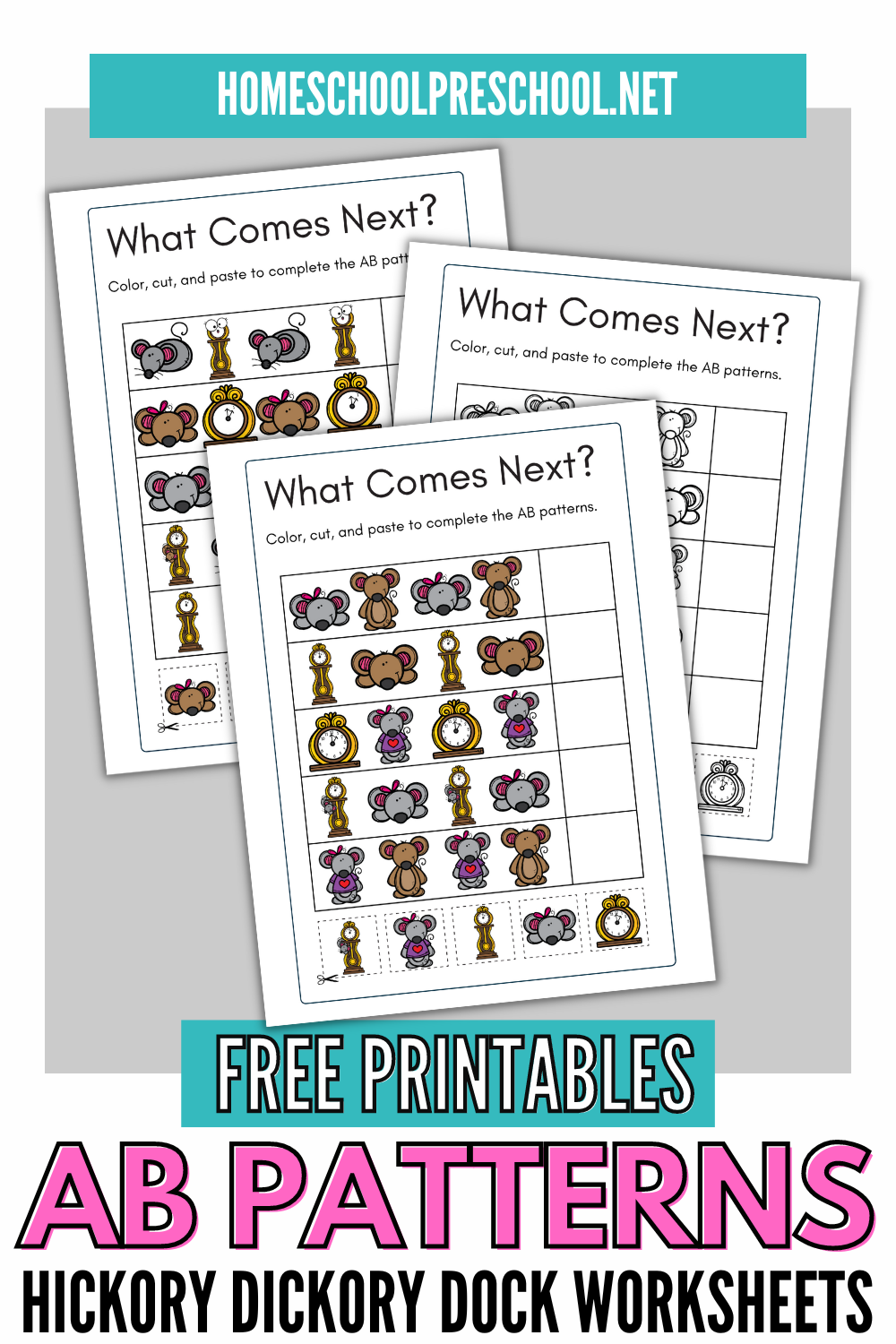
Introducing preschoolers to nursery rhymes like “Hickory Dickory Dock” does more than just entertain; it’s a vital part of their developmental learning.
Nursery rhymes are a fantastic way to enrich a child’s verbal skills and phonetic awareness. They’re rhythmical and melodic, which makes them exceptionally memorable and enjoyable for young learners.
This rhythmic foundation not only facilitates language acquisition but also enhances a child’s ability to recognize sounds, an essential skill for reading readiness.
Furthermore, through nursery rhymes, children learn storytelling elements, boosting their comprehension and narrative skills in a highly engaging and friendly manner.
In essence, combining nursery rhymes with educational activities, such as our AB Pattern Worksheets, creates a multifaceted learning experience that nurtures both intellectual and creative growth.
Hickory Dickory Dock AB Pattern Worksheets
In this free set of nursery rhyme printables, you’ll receive worksheets that focus on the following skills:
- AB pattern recognition
- Sequencing
- Fine motor skills (through cutting)
Each worksheet is designed to target these important developmental areas while keeping your little ones entertained with the beloved characters from “Hickory Dickory Dock.”
AB Pattern Worksheets
The pages in this activity pack ask children to identify the AB pattern in each row. Then, they will cut and paste the image that comes next in each pattern.
These worksheets not only make learning fun and engaging but also help children develop their fine motor skills. It’s a win-win for both parents and teachers.
This pack includes both a full-color set and a black/white set to save on ink. Children can color that set, if they’d like.
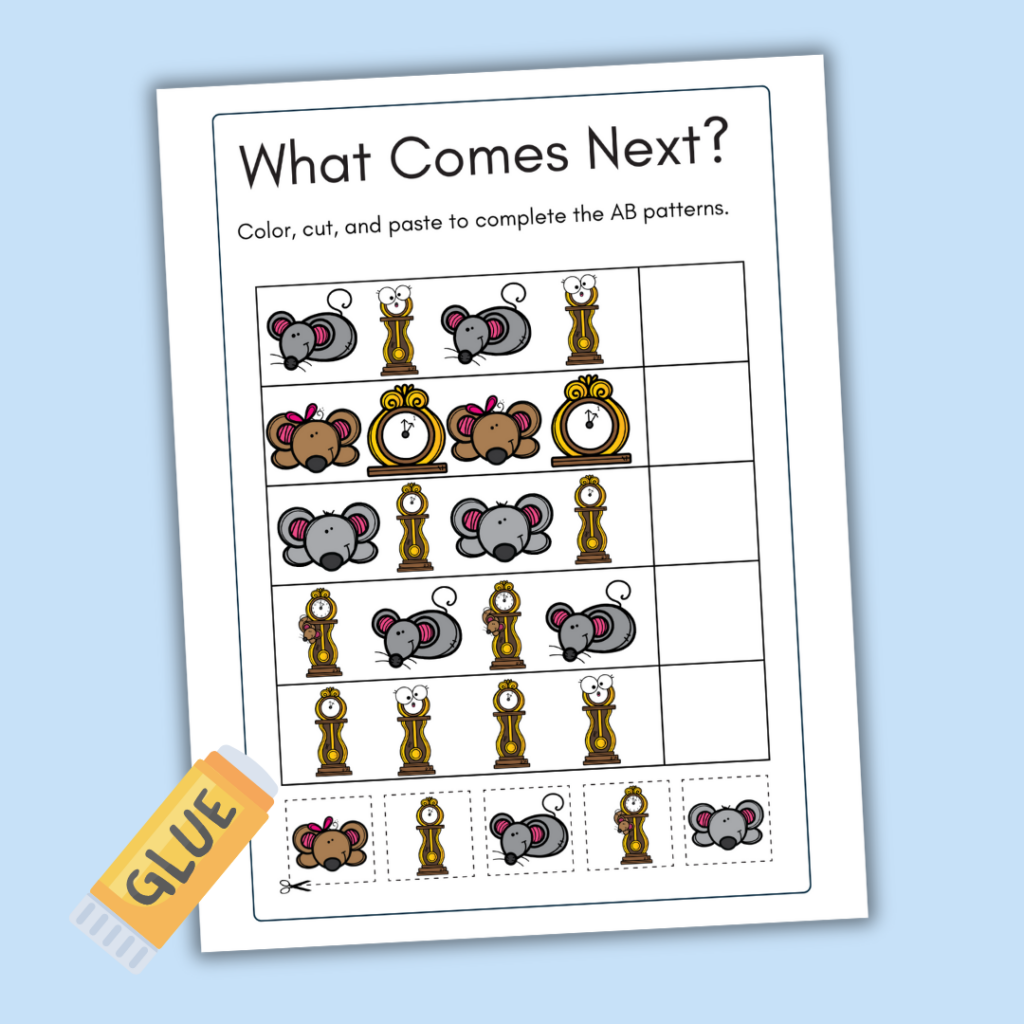
Who can benefit from using pattern worksheets?
Pattern worksheets are incredibly beneficial for preschoolers and kindergarten-aged children who are in the initial stages of understanding sequences and relationships between objects. These exercises lay a strong foundation for mathematical concepts such as counting, sorting, and recognizing patterns, which are crucial for developing logical thinking and problem-solving skills.
Furthermore, educators and parents looking for innovative and engaging teaching materials will find these worksheets a valuable resource. They offer a unique approach to combine learning with play, making education an enjoyable experience for children. By incorporating these worksheets into their teaching methods, caregivers can foster an environment of curiosity and discovery, setting the stage for a lifelong love of learning.
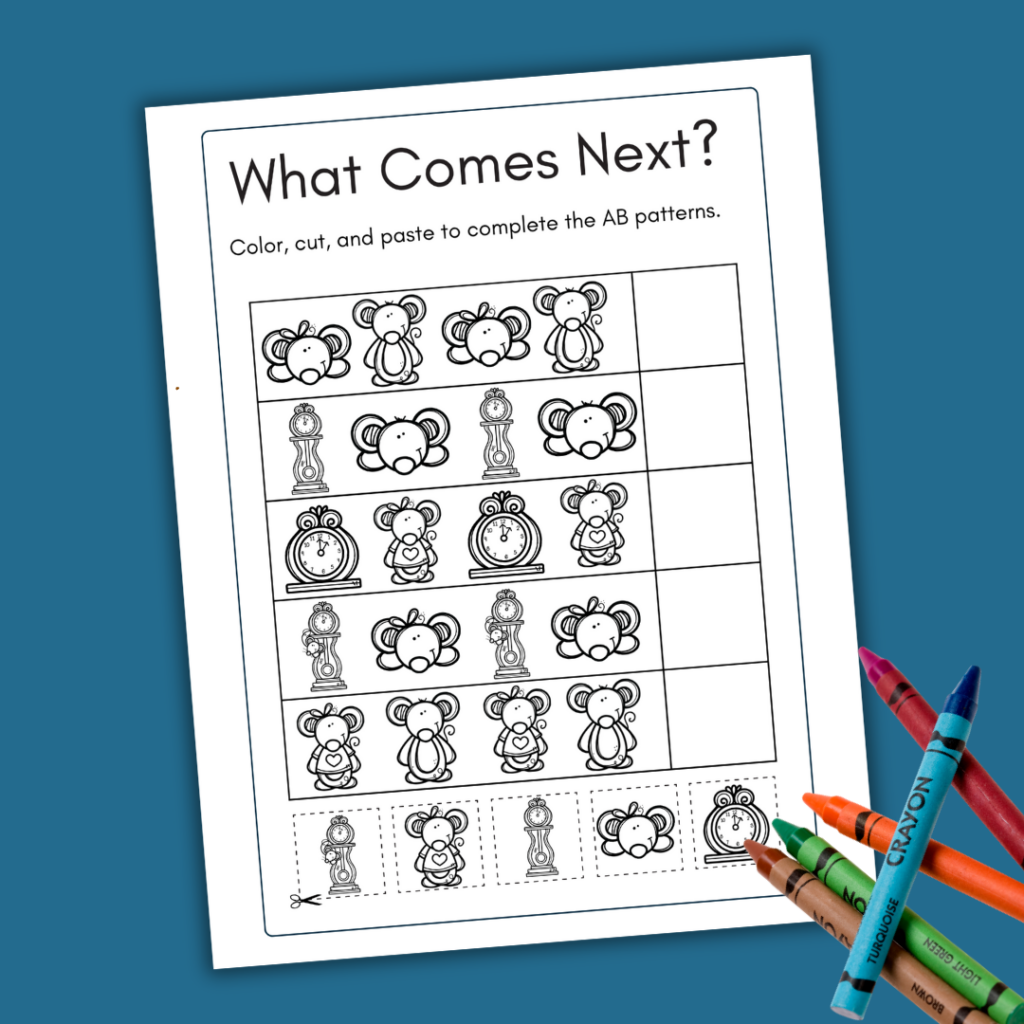
Hickory Dickory Dock Preschool Activities
Beyond the AB Pattern Worksheets, we’ve curated a collection of Hickory Dickory Dock Preschool Activities that extend the learning and fun. These activities are designed to complement the worksheets and provide a hands-on approach to reinforce the concepts learned.
Storytime with Props
Encourage imaginative play and storytelling by creating simple props related to “Hickory Dickory Dock.” Use toys, clocks, mice figures, or even craft your own. Act out the rhyme together, making it a lively interactive experience that enhances understanding and recall.
Clock Craft Activity
Crafting a paper clock can help children learn to tell time and understand the concept of hours, all while being immersed in the nursery rhyme theme. This activity aids in fine motor skill development as children cut, color, and assemble their clock.
Musical Rhyme Time
Set a musical background and sing “Hickory Dickory Dock” together. Use instruments or household items to create rhythm. This not only makes learning enjoyable but also aids in auditory processing and rhythm recognition.
Rhyme and Seek
Organize a treasure hunt with clues based on the nursery rhyme. Hide small mice or clock cutouts around the classroom or home, and guide the children with rhyming clues to find them. This fun game promotes problem-solving and understanding of the rhyme’s narrative.
By integrating these activities into your teaching or home learning environment, you provide children with a richer, multi-sensory learning experience. These hands-on activities not only deepen their understanding of the nursery rhyme and patterns but also foster a love for learning through play.
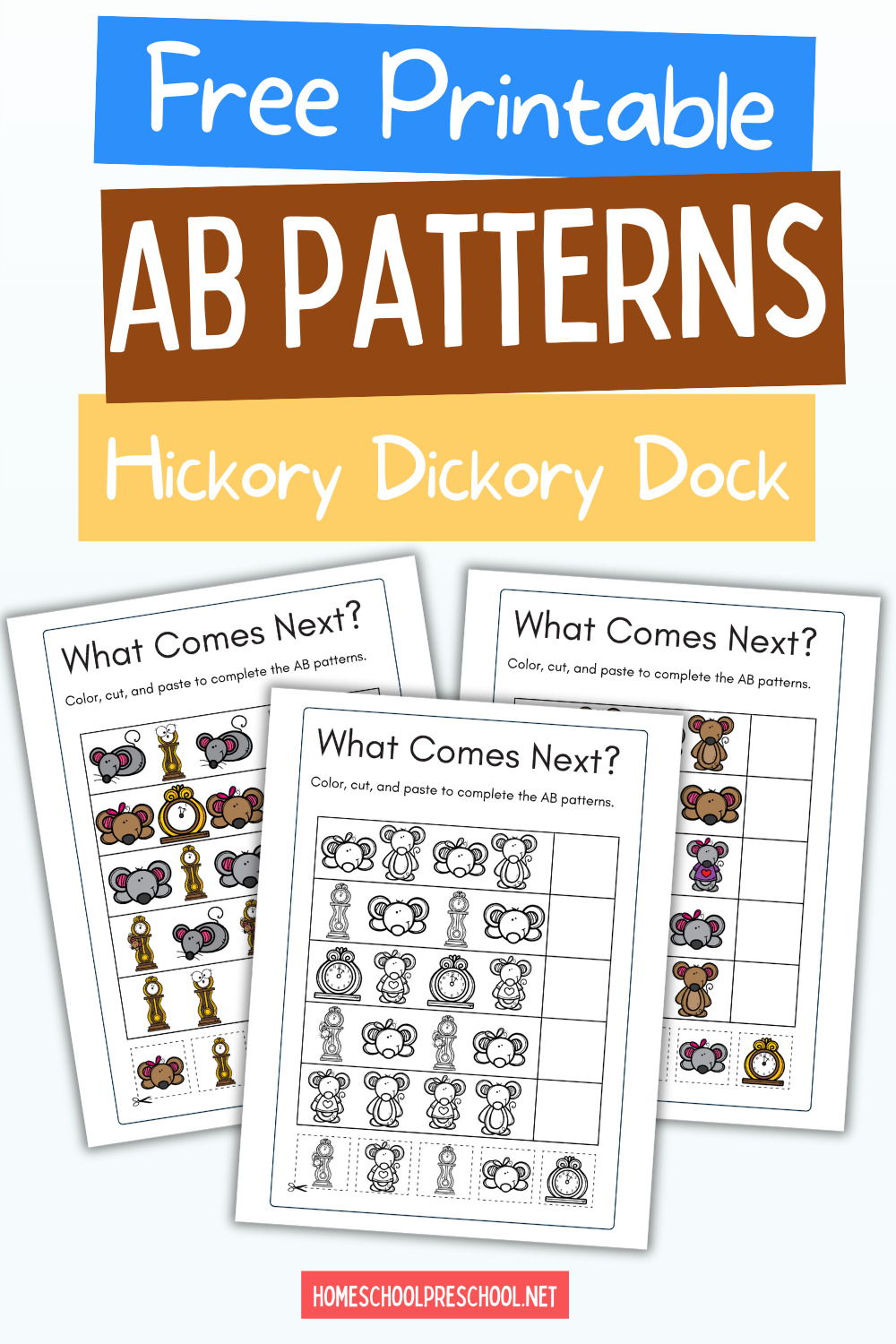
In conclusion, incorporating Hickory Dickory Dock into preschool and kindergarten curriculums through our pattern worksheets and complementary activities offers a rich, multi-sensory learning experience that is both enjoyable and educational.
By engaging children in a mix of analytical and creative tasks, we not only enhance their pattern recognition and cognitive development but also ignite their imagination and love for learning.
We encourage educators and parents alike to take advantage of these resources, fostering an environment where children can explore, learn, and grow with joy. Remember, the foundation we lay in these early years is critical, and what better way to build it than with the timeless charm of nursery rhymes and the interactive fun of pattern worksheets?
Together, we can make learning an adventure filled with discovery and delight for every child.
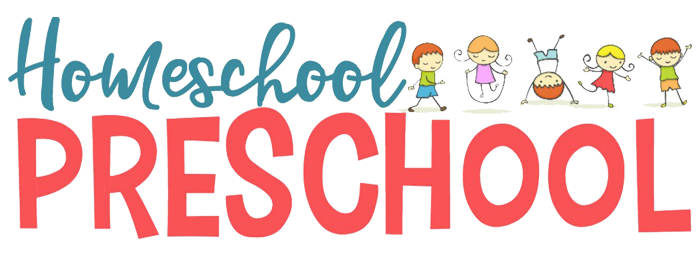


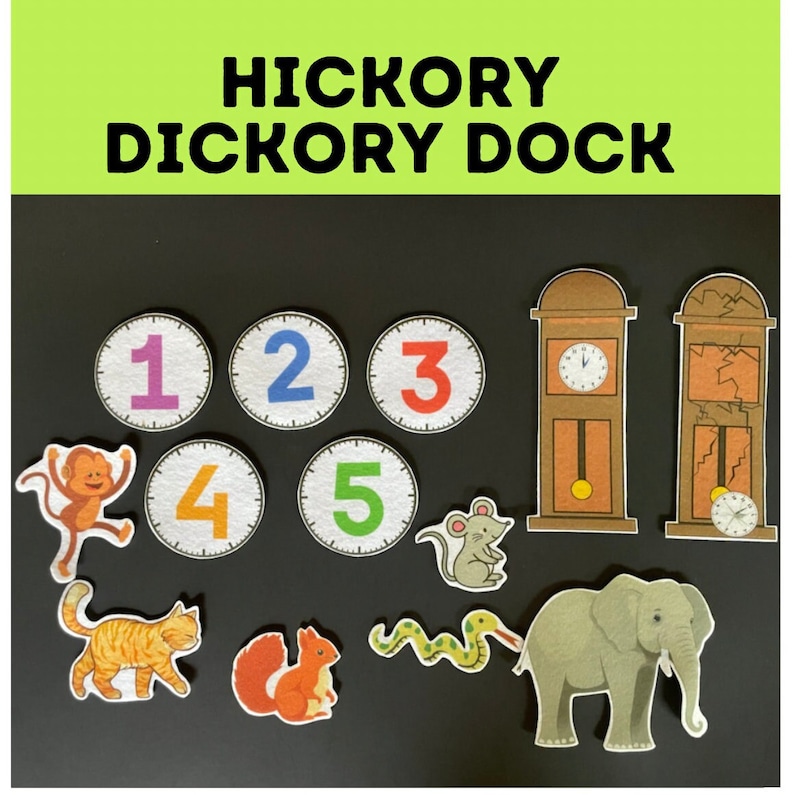

No llegan los imprimibles. ¿Cuánto suelen tardar? Gracias!
Desplázate hasta el final de la publicación. Ingresa tu información y los archivos imprimibles se abrirán en una nueva pestaña.
can’t wait for the great resources